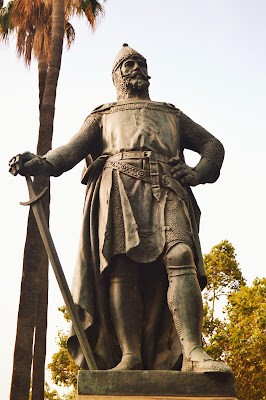Why
are giant statues made of bronze instead of brass?
Bronze is one of the oldest known metals and has been
used for sculptures since ancient times.
Statues made of bronze continue to be popular today,
found in parks and public spaces worldwide. But, ever passed by a giant,
beautiful bronze statue and wondered why it was made out of bronze instead of
brass? After all, both materials have a shiny, golden hue. For several reasons,
bronze is the preferred material for creating large statues. Let's find out why!
What is the Difference Between Bronze and Brass?
The main difference between bronze and brass is in their
composition. Bronze is an alloy made up of copper (90%) and tin (10%), while
brass is an alloy made up of copper (67%) and zinc (33%). While both metals
appear similar to the untrained eye, they have very different qualities.
Bronze vs Brass: Which One Lasts
Longer?
When it comes to longevity, bronze wins, hands down. This
is because bronze has better corrosion resistance than brass due to its higher
copper content. In addition, copper naturally develops a protective layer
called patina on its surface, which makes it more resistant to weathering and
oxidation over time. On the other hand, brass corrodes quickly if exposed to
moisture or acidic substances in the air. This means that bronze sculptures can
last for centuries without losing their original shape or colour, while brass
sculptures can only last a fraction of that time before needing repairs or
replacements.
Bronze vs Brass: Which
One Looks Better?
From an aesthetic point of view, both metals look very
similar, so it comes down to personal preference when deciding which one looks
better. However, one advantage that bronze has over brass is its ability to
take on a variety of colours depending on how it's treated - from light browns
to deep reds - making it ideal for creating statues with intricate details and
patterns that stand out against the background. Additionally, bronze has a more
classic look than brass since it's been used for centuries as a decorative
material in various monuments worldwide.
What are the most well-known bronze statues that have
stood the test of time?
The Statue of Liberty
is a world-famous symbol of freedom and democracy. It was sculpted by Frédéric
Auguste Bartholdi, who made it out of copper sheets held together by a steel
framework. Unfortunately, over time, the statue has acquired a green patina due
to rain and saltwater corrosion. This iconic statue stands 305 feet tall and
over 925 tons in New York Harbour!
The Great Sphinx in Giza stands as a testament to
ancient Egyptian sculpture. This massive structure is estimated to have been
built around 2500 BCE from limestone blocks covered with a stucco-like coating
containing red ochre pigment for coloration. Although no one knows why it was
built or who commissioned it, this impressive statue still stands guard over
the Giza plateau after 4500 years!
In India, visitors
can find an even more enormous bronze statue on an island in the middle of Lake
Narmada—the Statue of Unity. This 182-meter tall monument honours Indian
independence leader Vallabhbhai Patel and is twice as high as the Statue of
Liberty! Constructed using 500 thousand cubic meters of cement, 1800 tons of
reinforced steel rods, and 50000 cubic meters of bronze cladding, this
record-breaking monument will stand for centuries to come.
The Discobolus: The Discobolus is
an iconic 2nd-century Greek sculpture depicting a nude athlete in the
mid-throw. It is considered one of the most outstanding surviving examples of
classical art and has been reproduced multiple times throughout history—most
famously by Renaissance artist Myron. The original sculpture is thought to have
been made out of bronze, although its current whereabouts are unknown.
The Little Mermaid
- Located in Copenhagen, Denmark, The Little Mermaid statue is arguably one of
the most recognizable bronze sculptures in the world. Created by sculptor
Edvard Eriksen in 1913, it depicts a mermaid based on Hans Christian Anderson's
famous fairytale character sitting atop a boulder near the harbour.
The Thinker -
Another famous bronze statue is Auguste Rodin's The Thinker, which was created
in 1880 and depicted a man (thought to represent poet Dante Alighieri) deep in
thought while perched atop a rock. It has since become an international symbol
for contemplation and introspection and has been reproduced multiple times
throughout history—most notably as part of Rodin's Gates of Hell sculpture
series.
Conclusion:
When looking at large statues, especially those meant to
represent something important or meaningful in history or art, you want them
constructed with materials that will last for generations - like bronze! This
is because this metal is more durable than other materials like brass. In addition,
it offers beautiful colour variations thanks to its patina formation process,
which makes any sculpture crafted from this metal even more stunning. So next
time you're admiring a giant statue outdoors or in an art museum, keep these
facts in mind – chances are, what you're looking at was created from bronze
instead of brass!
Who are we?
We are an aluminum enthusiast and an aluminum metals
supplier in Canada and the USA.
We offer premium, different colour Aluminum Coil, anodized Aluminum sheets, & assorted colour aluminum wire and Aluminum Foil for sale in our warehouse, ready to ship today.
Call us today, Toll-Free: 866–860–0652, if you need
further information.

No comments:
Post a Comment